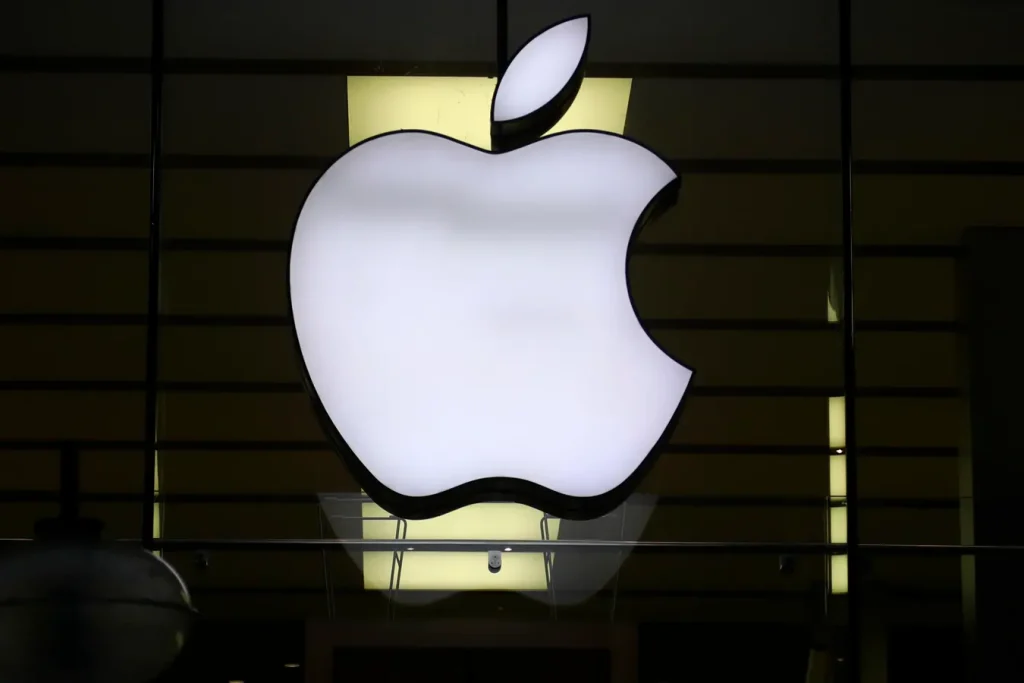Speculating about the future of Apple’s financial strategies is always a topic of interest for investors, and the possibility of a stock split in 2024 is no different. Although there’s no official statement from the tech giant concerning a stock split, it’s reasonable to examine past patterns and current market trends to predict potential outcomes. Apple has a consistent history of stock splits, with the most recent one being a 4-for-1 split in August 2020. These splits have traditionally been implemented when the company’s stock price reaches a certain threshold, making it more accessible to a broader range of investors.
Analysts often regard stock splits favorably as they signal the company’s confidence in its future growth. In Apple’s case, the brand’s continuous innovation, coupled with its robust financial performance, fuels this optimism. However, it is essential to note that a stock split does not fundamentally change a company’s value. Rather, it divides the existing shares into smaller pieces, thereby enabling more market participation.
Given Apple’s strong market position and the fact that its share price has risen substantially since the last split, it’s possible that another split could be on the horizon. However, many factors, including the company’s performance, market conditions, and management decisions, will shape this outcome. Furthermore, the impact of the ongoing pandemic on the global economy and Apple’s business operations cannot be ignored. The company navigated the 2020 crisis admirably, exhibiting resilience and adaptability. However, future uncertainties related to global health and economic stability could influence the decision to conduct a stock split.

In any case, the potential for an Apple stock split in 2024 will be a topic of interest for both current shareholders and those considering investment. While it’s impossible to predict with certainty, it’s worthwhile for investors to stay informed about market trends and the company’s financial strategies. As with all investments, the decision to buy, sell, or hold should be based on thorough research and personal financial goals.
In conclusion, while there are several indicators suggesting the possibility of an Apple stock split in 2024, this is purely speculative at this point. Investors should not make decisions based on this speculation alone but should instead consider the broad range of factors that influence the company’s financial health and the stock market’s performance. As always, the best approach is to stay informed, monitor market trends, and make decisions based on a comprehensive understanding of both the company and the broader economic landscape.
Analyzing the Current State of Apple Stock
Analyzing the current state of Apple Inc.’s stock, it’s clear that the technology giant has maintained a robust and steady performance in the market. The company’s shares have consistently delivered value to its investors, gaining momentum along with the growing demand for its innovative products and services. As per the latest financial reports, Apple’s earnings have exceeded expectations, reflecting a positive impact on the stock’s performance. The stock’s current trajectory suggests a promising outlook, largely due to Apple’s continued growth, its successful product diversification strategy, and its strong consumer base.
The company’s high valuation, however, raises questions among some investors about its sustainability, especially in the face of potential market fluctuations and increasing competition in the tech sector. Moreover, some analysts have expressed concern over the dependence of Apple’s revenue on a single product, the iPhone, despite its consistent popularity and sales. The ongoing global chip shortage also presents a challenge, potentially disrupting the company’s supply chain and affecting its overall performance. Yet, despite these concerns, many market observers remain optimistic about Apple’s ability to maintain its strong position in the stock market, primarily due to its history of resilience, its vast cash reserves, and its demonstrated capacity for innovation and adaptation. It’s important for potential investors to closely monitor the company’s strategies and financial health, as well as broader market trends, to make informed decisions about investing in Apple stock.
A Look Back at Apple’s Stock Split History
Since its inception, Apple has implemented four stock splits throughout its history, all of which have had a significant impact on the stock’s overall value. The first stock split occurred in 1987, a mere decade after the company was founded. At this point, Apple was still a burgeoning tech firm, and the move was seen as a strategy to make its shares more accessible to average investors. The second split took place in 2000, on the cusp of the dot-com bubble burst. This was a 2-for-1 split, just like the first one, and it came after a period of phenomenal growth for the company’s stock. The third split took place in 2005 and was also a 2-for-1 split.

It was initiated when Apple was amid a significant reinvention, transitioning from a computer manufacturer to a multifaceted tech company with the introduction of the iPod. The most recent split, a 7-for-1 split, occurred in 2014, right around the time Apple was trading around $700 a share. The main intent behind this split was to make Apple’s stock more affordable for the average investor. This move also significantly increased the number of shares outstanding, contributing to Apple becoming the first U.S. company to achieve a market cap of $1 trillion in 2018. In each instance, the stock split was a strategic move by Apple to maintain its strong market position and continue to attract a broad base of investors.
Market Sentiment and Analysts’ Forecasts
Market sentiment is a critical factor that can significantly impact analysts’ forecasts. This subjective attitude of investors towards the overall financial market or a particular security can influence the market’s direction, either bullish or bearish. When the market sentiment is positive, it often signals an upward trend, suggesting that investors are expecting prices to increase in the future. Conversely, negative market sentiment typically signifies a downward or bearish trend, indicating that investors anticipate a decline in prices.
Analysts’ forecasts, on the other hand, are predictions about future trends in the markets, specific sectors, or individual securities. These forecasts are made using a variety of analytical methods and tools, including both quantitative and qualitative analyses, to assess and predict future performance. The interplay between market sentiment and analysts’ forecasts can be complex. When market sentiment is high, analysts may be influenced to make more optimistic forecasts. Conversely, when market sentiment is low, analysts may tend to make more pessimistic predictions.
However, it’s crucial to note that while market sentiment can influence analysts’ forecasts, it’s not the sole determinant. Other factors such as economic indicators, company performance, and geopolitical events also play a significant role. Therefore, while understanding and considering market sentiment is vital, it should be used in conjunction with other factors when making investment decisions. Furthermore, it’s important for investors to be aware that market sentiment can be highly volatile and can change rapidly in response to new information or events. Therefore, while it can provide valuable insights, it should not be relied upon as a sole predictor of future market movements.
In conclusion, market sentiment and analysts’ forecasts are interconnected and play a significant role in investment decisions. Understanding the relationship between these two factors can help investors make more informed investment decisions and potentially increase their chances of achieving their investment goals.
Potential Catalysts for an Apple Stock Split
Various factors could potentially trigger a stock split for Apple Inc., one of the world’s technology giants. Firstly, the company’s strong financial performance and growth trajectory could act as a catalyst. If Apple continues to report robust quarterly earnings and increase its revenue and profit margins, its stock price might rise to a level that would necessitate a split. Secondly, the company’s decision to invest heavily in new technologies and markets such as artificial intelligence, electric vehicles, and healthcare could also lead to a surge in its stock price, making a split more likely.
Another potential catalyst could be the desire to make Apple stock more accessible to retail investors. High stock prices can often be a barrier for small investors. By splitting its stock, Apple could lower the price of individual shares, enabling more people to invest. Additionally, more affordable shares could also increase the liquidity of Apple’s stock, as there would be more shares available to trade on the market.

Strategic reasons could also influence Apple’s decision to split its stock. For instance, Apple might want to increase the weight of its stock in the Dow Jones Industrial Average, which is price-weighted. A stock split would lower Apple’s per-share price, potentially increasing its weight in the index.
Lastly, the company’s history of stock splits might suggest a future split. Apple has split its stock five times in its history, most recently in 2020. If the company continues to follow this pattern, it might decide to split its stock again in the future. However, it’s important to note that stock splits do not affect the company’s overall market value; they merely increase the number of shares while lowering the price of each share.
Predictions for an Apple Stock Split in 2024
Predicting the financial future is never a certainty, but certain trends can offer insight into potential outcomes. For Apple, a company known for its strategic stock splits, 2024 could be a year for another significant change. Historically, Apple has implemented stock splits to make shares more accessible to average investors, thereby broadening its shareholder base. It is not inconceivable that the technology giant would consider a similar move in 2024.
The company’s last stock split occurred in 2020, when it undertook a four-for-one split. If Apple follows its previous pattern, it could potentially implement another split in 2024. However, numerous economic factors will influence this decision, including market conditions, the company’s financial health, and investor sentiment. Additionally, the company’s performance, particularly in relation to its innovative tech products, will also play a crucial role. Apple’s continued growth and expansion into new markets, bolstered by its robust product pipeline, could create a favourable environment for a stock split. However, it’s also crucial to remember that a stock split does not change the fundamental value of a company. Investors should therefore consider a range of factors before making any decisions based on potential stock splits. Ultimately, while Apple’s past actions suggest a possibility of a stock split in 2024, only time will reveal if this prediction comes to fruition.

